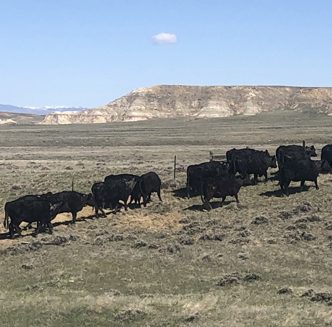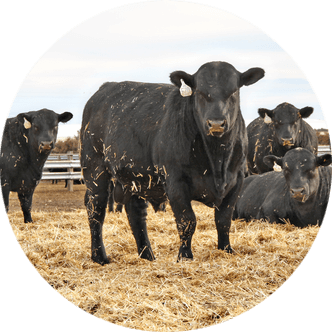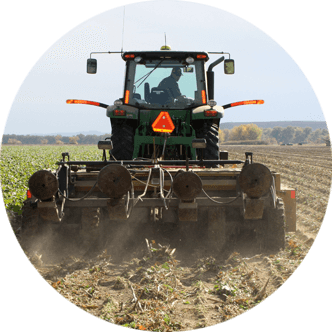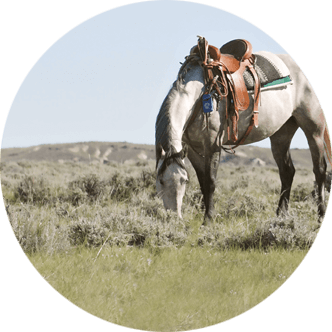Angus breeders look to leverage maternal strengths with new tools
The cow is a cornerstone of any successful ranching operation, and Angus females have proven themselves to be reliable, consistent producers. Their merit is reflected in the population of the U.S. cow herd, which is now more than 80 percent Angus influenced.
Producers have spent years selecting cattle with not only good maternal strengths, but those who exemplify the best of the Angus breed.
“We’ve always bred for cows,” said Mark Nikkel, owner of Mill Brae Ranch since 2018, and herd manager since 1987. “The bulls pay the bills and keep you in business, but there’s got to be a cow first.”
Now, Nikkel and other Angus producers can be even more confident in selection decisions made in pursuit of maternal merit.
The American Angus Association (AAA) released three new maternal expected progeny differences (EPDs) on May 23, alongside annual updates to the genetic evaluation – Functional Longevity (FL), Teat Size (Teat) and Udder Suspension (UDDR).
Developed by Angus Genetics, Inc. (AGI), the EPDs offer consistent characterization of the traits across the entire registered Angus population, which will cut down on the research time Nikkel’s wife Janice has invested each year to find the right genetics for their herd.
EPDs in use
The couple began tracking udder quality on their Maple Hill, Kan. operation more than a decade before the association formalized a scoring guide in 2021.
“The teat size and shape is so important to us as we calve. Age plays into this as well. This is where the longevity piece comes in,” Janice explained. “When you have a three-year-old that shows a decline in udder quality, they’re not going to be here very long. Now we’ve wasted a lot of time and money to produce this high-quality animal to send her down the road and it makes no sense.”
This is a sentiment Esther Tarpoff, AAA director of performance programs, hears.
“We’re excited to move these EPDs into full production, enabling weekly predictions of the traits,” Tarpoff said. “This advancement enhances the ability of association members and, more importantly, their commercial cow/calf customers to select for cow survivability and lifetime productivity – an area which has been missing from the Angus genetic toolkit until now.”
Following a dispersal of the original Mill Brae herd in 2018 and a brief break from raising seedstock, Mark and Janice made the decision to purchase back several foundational females still in production at other operations to reestablish their registered Angus operation.
They made the commitment, at the time, to enroll in the association’s Inventory Reporting Program to earn MaternalPlus distinction and submit their historic teat and udder data. The two initiatives gave the Nikkels access to the three research EPDs.
“I used those spreadsheets – I know they are just research EPDs – but I am so thankful I had access to them,” said Janice. “If an individual bull we were looking at didn’t score well in the longevity, teat and udder categories, he went off the list – it takes too long to overcome challenges with those types of traits.”
EPD breakdown
The FL EPD aims at improving the cow herd by increasing the number of calves a female can produce over her lifetime. The Inventory Reporting Program and the commitment made by enrolled members was crucial to the ability to characterize this trait.
As a whole herd reporting system, Inventory Reporting and its second tier, MaternalPlus, tells a more complete story about a herd and its females.
Every year, each female is reported to have a calf, a reason code for not having one or a reason code for culling. This allows for more complete data to be quantified and used to predict the number of calves a female – or daughters of a sire – is expected to produce by six years of age.
“With the use of technology like genomics, we are turning generation intervals faster than ever,” said Kelli Retallick-Riley, president of AGI. “Traits like udder quality or lifetime production records take time to collect. Producers will be able to utilize the FL, Teat and UDDR EPDs as risk mitigation tools, especially in today’s fast-paced genetic landscape where an artificial insemination sire may no longer be actively marketed by the time his daughters reach full production.”
Along with the release of the three new EPDs, the Maternal Weaned Calf Value ($M) and Combined Value ($C) indexes have been updated to include the new traits.
The release of these maternal tools ran alongside annual evaluation updates to the economic assumptions used in the indexes as well as updates to the models for the Heifer Pregnancy (HP) EPD and feed efficiency.
Annual genomic score updates, which have typically coincided with the annual update and the release of the 2025 Fall Sire Evaluation Report, will be released on June 27.
Producers interested in learning more can find a detailed breakdown of the updates at angus.org.
Jessica Hartman is a communications specialist for AAA. This article was originally published by the association on May 23.





